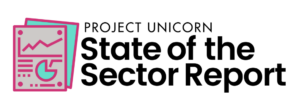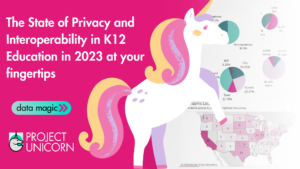Data Interoperability in K-12: The End of the Human API

By Erin Mote
This is a blog series about interoperability: the seamless, secure and controlled exchange of data between applications. In this series, we will highlight the ways that data interoperability is laying the foundation for innovation and helping enable great classroom instruction. We will also hear from partners who are implementing solutions to overcome the lack of data interoperability today in the K-12 sector. You can find the whole series here.
Tell us about your work at Brooklyn Lab.
I’m the co-founder of Brooklyn Lab, and data interoperability has been built into our blood. It’s something that we’ve prioritized from the beginning, and we believe that it’s part of the secret to our success. We have three years of academic growth on both reading and math (according to NWEA MAP results). This year, I think we’re going to be even better based on early indications in our students’ performance data.
How is it that our students routinely outperform their peers? It lies in the relationships we have with our students, it’s our ability to meet every student where they are, it’s our ability to do targeted interventions, it’s our ability to say, “I understand you’re not accessing this content because you don’t have the prerequisite knowledge that you need. You can’t access fractions in sixth grade if you don’t have the first and second and third grade standards around basic numeracy and the number line.”
Our technology Cortex (a formative assessment engine and LMS that’s built on the Ed-Fi data standard) allows us to visualize and see a wide range of data all in one way. That means teachers can use a variety of tools to meet every student where they are and provided targeted intervention.
How do you define personalized learning?
I believe in the expanded definition of personalized learning, so it’s not just about test scores. When we think about personalized learning, we think about how we meet every student where they are. Sometimes that’s intensive small group instruction with a teacher and/or tutor working with young people in small groups of two or three. Sometimes it’s meeting a student who needs an intervention, with a service like in art and dance movement therapy. Sometimes it’s extension work, making sure that a student who’s in grade seven but who is doing math on a grade nine level has the opportunity to upskill themselves.
When you think about personalized learning, what role does data interoperability play in successfully implementing a personalized learning model?
I believe that data interoperability and data standards are essential. Interoperability shifts the student’s learning progression from teacher-owned to student-owned. Students need to know not just where they are but where they need to go. And they can only know that when they see their own data around mastery. For example, how did they do on the given assessment? That has to be something that lives with the student and that he or she owns in order to drive their learning. Teachers need to have that same visualization of student data. So they’re really able to be the conductor of that personalized learning orchestra rather than a sage on a stage.
Why is it important for a district or a CMO to be empowered to manage their students’ data?
Time and money. I just heard this from teachers in Boston: they are downloading a PDF from an ed-tech vendor. They are then transcribing that PDF into an Excel spreadsheet or a Google spreadsheet. Then they’re creating a pivot table to look across the data. And they’re doing this not for one piece of software but for five or six costing them many hours. They need a system or tool that is interoperable with a variety of data systems that easily work with one another.
And then there’s cost-saving. There’s a hidden cost in not having interoperability. It’s the service contract you have with your SIS to clean your data, the price that you’re paying for data integration solutions, or an increase in software prices that gets passed along to districts when your vendors have to use or create data integration services.
So when we don’t privilege interoperability, when we don’t privilege products that allow us to get our data out, it means that in the end, we’re actually paying for access to our data, not just in teacher time and student learning, but actual money. This is our students’ data, and we need to take it back in a way that empowers instruction.
What do you see as the barriers to districts getting easy access and managing their students’ data?
- Technical know-how at the district-level. The ability to have structured systems in place that allow you to actually get that data into your district system.
- Intentionally sticky business model issue. It’s a business model issue for some ed-tech vendors. They don’t have the skills or want to spend the time to recode to allow for interoperability. Some vendors may have the ability, but they’re unwilling to give you your data so you might be further locked into using their product.
- Antiquated data sharing agreements. Not having the right data sharing agreement in place between a vendor and a district.
- District procurement lacks focus on data interoperability. I think it can be as simple as a district doesn’t ask this one question during the procurement cycle: “How do I get my data out of your system?”
How do we help the teacher in the classroom? How does data interoperability help the teacher in the classroom?
One of the things that data interoperability unleashes in the classroom is the ability to take multiple tools and apply them across the classroom in a way that doesn’t feel disparate because that data is able to come back into one system or to one teacher. When I want to move a student throughout different learning experiences, that ability to have data interoperability across those learning experiences with different tools, with different methods, allows me to actually have better instruction. This concept of personalized learning, meeting every student where they are, is deeply enhanced when the same type of metric can be seen in one place across all of a student’s different learning experiences.
For the other blogs in this series, see:
- Data Interoperability in K-12: I promise this isn’t boring
- Data Interoperability in K-12: Where is the magic?
Erin Mote is the co-founder of Brooklyn LAB and CEO of the non-profit InnovateEDU. You can reach Erin at @erinmote.
This post originally ran on the Michael & Susan Dell Foundation blog.
Stay in-the-know with all things EdTech and innovations in learning by signing up to receive the weekly Smart Update. This post includes mentions of a Getting Smart partner. For a full list of partners, affiliate organizations and all other disclosures, please see our Partner page.





0 Comments
Leave a Comment
Your email address will not be published. All fields are required.